Two big reasons why lithium free fall may have more to go
Lithium prices have taken a sharp turn lower in recent weeks, with several key markets hitting two and a half year lows. The price of lithium carbonate in China, generally considered the lowest common denominator of lithium minerals prices, is down 33% since its April peak and 87% from its all-time peak in October 2022.
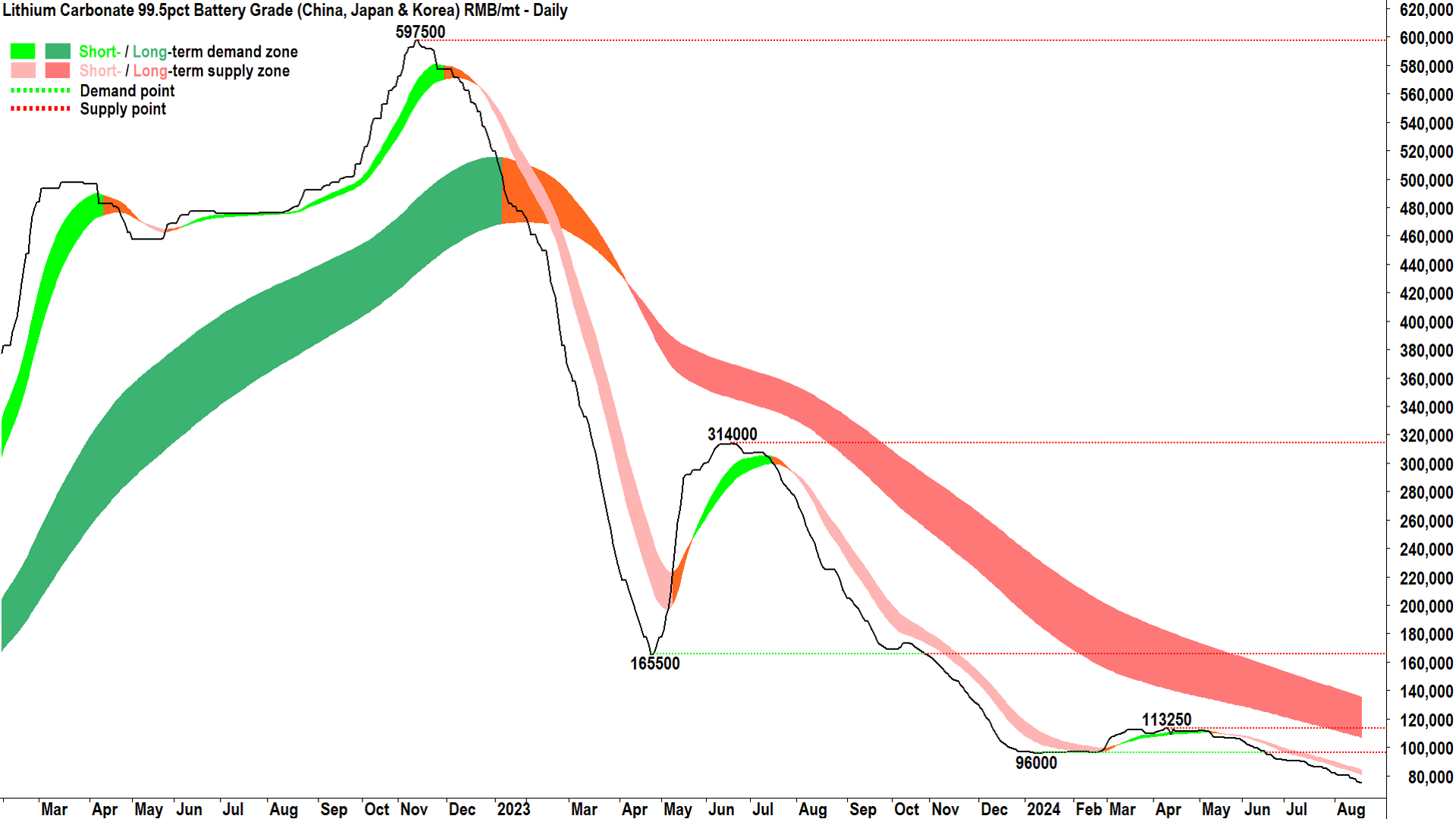
Over roughly the same time, spodumene concentrate – the hard rock version produced by Australian-based miners like Pilbara Minerals (ASX: PLS), Mineral Resources (ASX: MIN), IGO (ASX: IGO), and Liontown Resources (ASX: LTR) – is down nearly 36% and over 90% respectively.
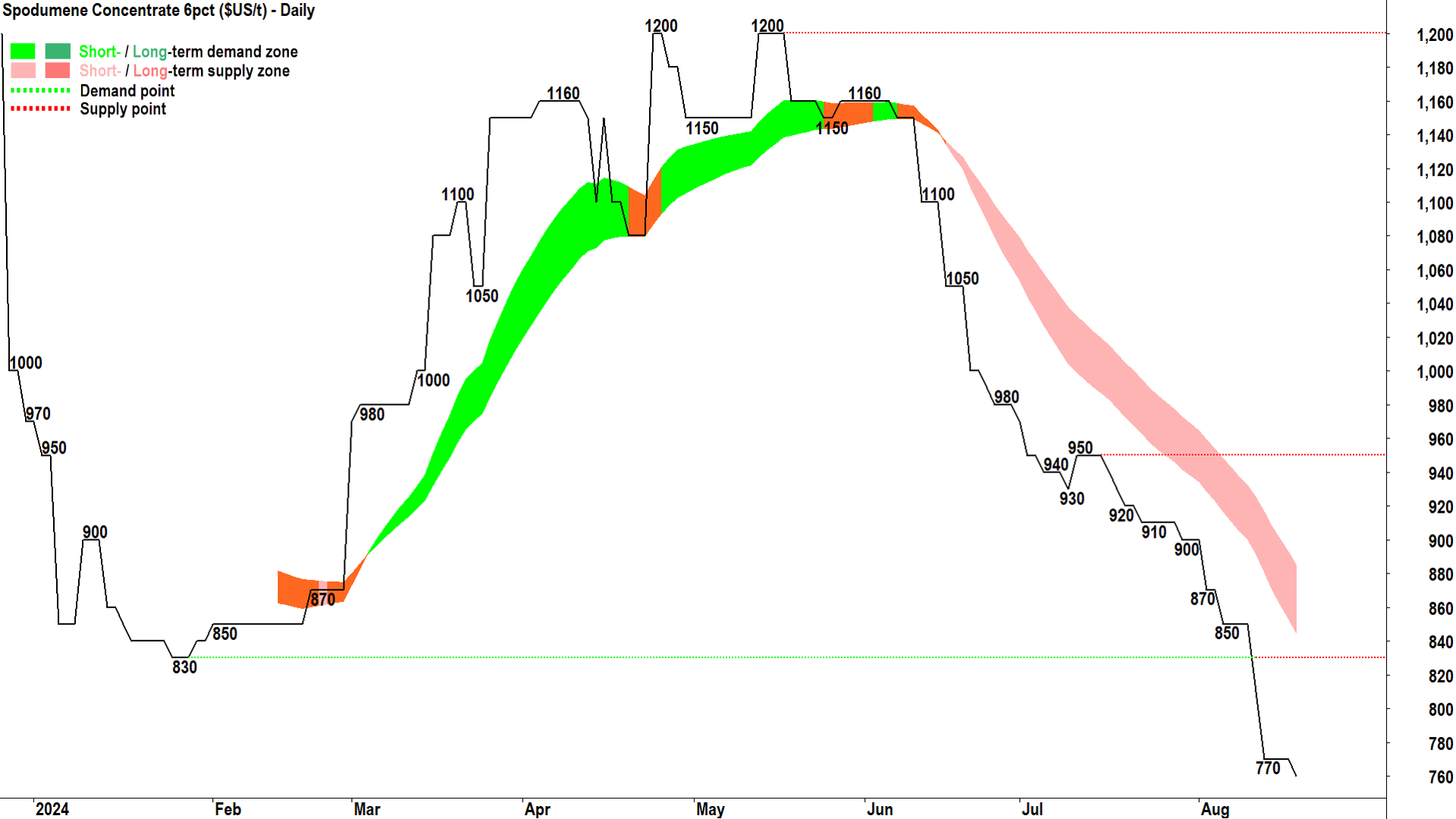
The general consensus among the major brokers and research houses is that the problem remains a wall of supply from Australian, Chinese, South American and African producers – who continue to progress several major ramp-ups despite lower prices – against a backdrop of slowing demand from the EV sector.
In the interest of keeping you up to date on the developing and dynamic situation in lithium minerals, here’s the latest from three separate research reports released over the last few days from Morgan Stanley, Goldman Sachs, and Macquarie.
Morgan Stanley: “DataDig: China EV sales – Cracks in the road ahead?”
The major demand factor for lithium minerals remains the global EV industry, but by far and away the largest consumer within this industry is China. Morgan Stanley notes that pure-EV sales in China fell to 551k units in July, a 2% rise on an annual basis, but a worrying 10% fall compared to June.

Chinese EV sales are being negatively impacted outside of China due to lower global EV adoption, increasing competition from internal combustion engine (ICE) manufacturers, and rising protectionism fears.
The latter reason relates to potential tariff hikes and from EU and US regulators retaliating against perceived Chinese dumping of EVs into those markets. Chinese EV manufacturers have enjoyed substantial government subsidies and aid over the last decade, and this has left several overseas markets for Chinese EVs mulling strategies to protect their own EV manufacturers.
Chinese EV manufacturers are resorting to “aggressive channel-stuffing”, says Morgan Stanley, which the broker believes “could lead to an increase in inventories and a slower start to 3Q sales." As a result, the broker's China Autos team suggest "downside risks to China EV sales moving forward.”
The result all of their analysis leaves Morgan Stanley “cautious” with respect to lithium stocks under their coverage.

Goldman Sachs: “Australian Lithium & Gold Coverage”
As you can see from the title, this note is two-parter based upon Goldman’s ASX lithium and gold coverage – so you’ll see as a bonus several references to gold stocks in the charts shown below.
Goldman Sachs probably couldn’t have picked two commodities with more dichotomous fortunes over the past two years! As lithium prices have slumped, gold prices have consistently edged to new record highs. In the chart below, it’s therefore no surprise that when Goldman Sachs’ base case forecasts are marked to market for spot commodity prices and FX rates, lithium stocks are those with the greatest downside and gold stocks are those with the greatest upside.
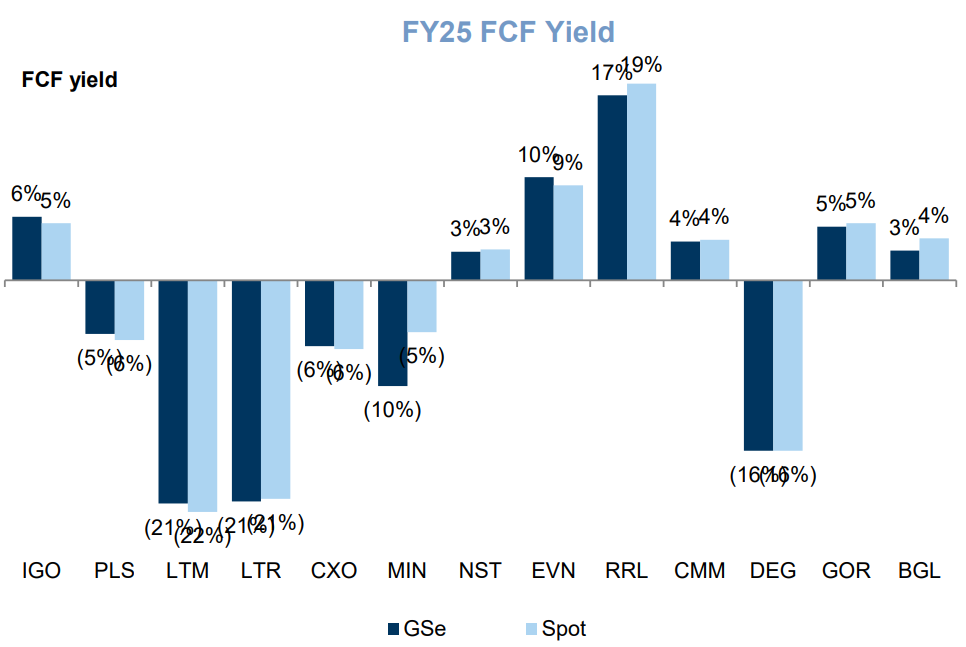
Goldman Sachs has left their base case assumptions for lithium minerals unchanged since their last ASX lithium sector update in July. In theory, this suggests the broker believes prices will rebound in the last quarter of 2024 (US$9,294/t Lithium Carbonate spot versus US$11,683/t forecast) before moderating in 2025 (US$11,000/t forecast), and steadily rising from 2026 (US$13,323/t forecast)
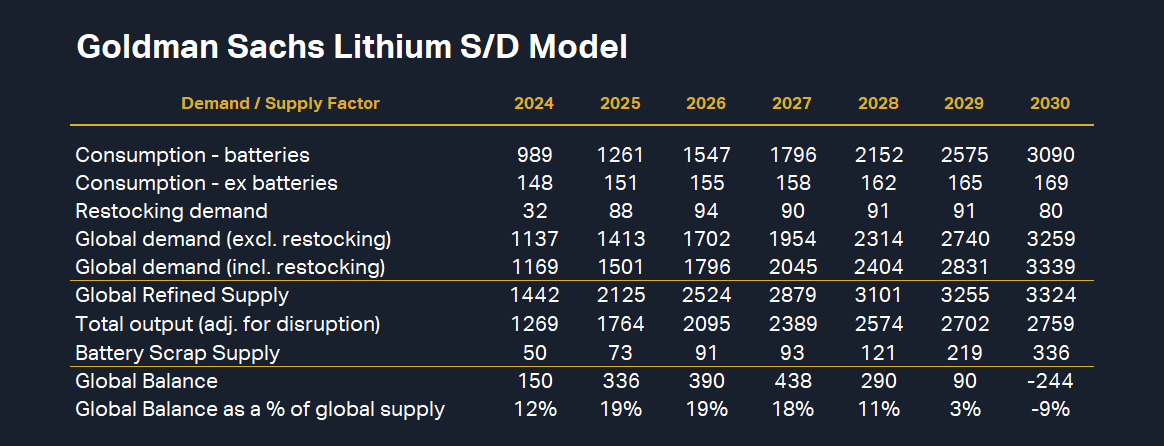.png)
Despite expecting a modest rebound in lithium minerals pricing, Goldman Sachs’ “Lithium S/D Model” forecasts the current global surplus for lithium minerals will grow from this year's 12%, to 19% in 2025 and 2026, and not reach a deficit until 2030 (-9%).
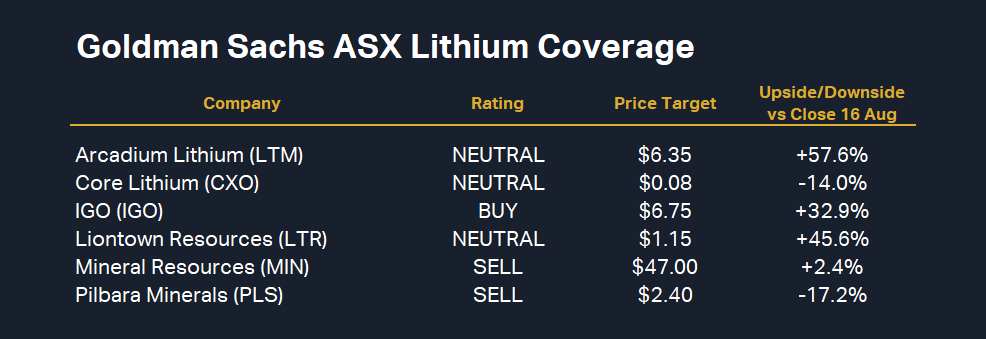
Macquarie: “Australian Lithium and Rare Earths Miners Seeking a market bottom”
Many lithium market watchers speculated that as lithium prices fell higher cost, lower quality producers like China’s lepidolite miners, and higher cost African miners, would be forced out of the market. Also, major producers in Australia and Chile would be forced to trim production or curtail planned ramp-ups.
The hope was this would provide a natural balance to what has been a massive supply response to the lofty lithium minerals prices of 2022. Macquarie notes that this has so far largely not occurred, as lepidolite miners, African producers, and newly commissioned brine producers in South America have chosen to cut production costs instead of cutting production.
The broker notes that cost reductions in the order of magnitude of greater than 10% had been achieved at some so called “marginal cost producers”, and some of them had also reiterated their full year production guidance along with assurances of further cost cutting measures to come.
"The updates on production guidance from other high cost lithium producers will be a key focus in the near term as the lithium market seeks a bottom."
– Macquarie
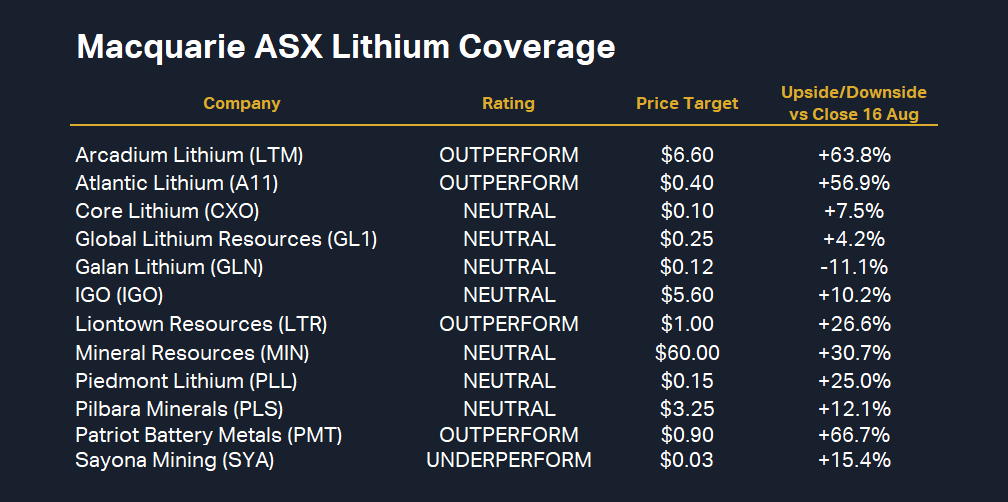
Two big reasons why lithium’s free fall might have more to go
The two key takeaways out of the research presented by the three brokers are these:
Demand for lithium minerals from the Chinese EV industry remains subdued, and there remains a credible threat to this demand due to possible protectionist measures that might be implemented in the critical EU and US markets.
An impactful (on lithium minerals pricing) supply side response is yet to eventuate, because so far, producers have chosen to cut costs rather than cut supply.
Clearly the situation in the lithium market is dynamic and either of these factors could change quickly. This is why we continue to scour and bring you the latest updates from the major research houses that track the industry, so you can make informed decisions about your investments.
This article first appeared on Market Index on Tuesday 20 August 2024.
5 topics
12 stocks mentioned

